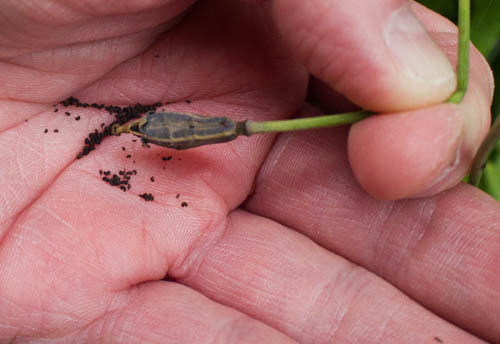
Before you go on holiday, it’s important to make arrangements for someone to look after your houseplants – ideally, someone who’s keen on gardening. If the draining board in your kitchen is not in shade, or you have a venetian blind to protect them from scorching sunshine (we live in hope!), group all your houseplants there, writing down the care instructions clearly on a piece of paper or sticking them on the side of each pot and talk them through their individual needs before you leave. Alternatively, water them thoroughly then stand the pots on an old towel or capillary matting with one end dipped in a sink full of water to act as a wick; single plants can be watered using a wick of a cotton shoelace or a piece of wool. They can also be put in a shady spot outdoors – houseplants enjoy a holiday and can be put outdoors once the danger of frost has passed then brought in before the first frosts of autumn.
Japanese onions are among the best for over wintering and should be sown from mid-August. The timing is critical, sow too early and they ‘run to seed’, too late and they will be too small to survive the winter. Sow from mid to late August, depending on whether you are in the north or south of the country. The seeds should be 2.5cm apart in rows 30cm apart, rake a high nitrogen fertiliser into the seedbed before sowing and top up the nitrogen again in spring for the highest yields or plant ‘sets’. ‘Express Yellow OX’ and ‘Buffalo’ are tried and tested varieties.
From late summer onwards, collect seed hardy and half-hardy annuals. Forget F1 hybrids they don’t come ‘true’ from seed and concentrate on species like ‘Love in a Mist’, and annual poppies (both can become a weed, so collect what you need, then remove the remaining seed heads). Keep a close watch on the seed pods and start collecting as soon as they start to split, cut them off carefully as they dry, so that you don’t lose the seeds and put them into paper bags or an enveloped marked with the name of the plant and the date it was collected or put the pods on a layer of paper in a seed tray. When the seeds have dried and been shaken out, keep them in envelopes in a draw or sealed in a glass jar with silica gel, anywhere cool and dry until next spring when you start sowing.
Rhododendrons and camellias form next year’s flower buds from mid-summer to mid-autumn. During that time, the soil or compost they are planted should never dry out if it does, they will not form buds or abort those they already have. Check them daily during dry periods and water thoroughly, with rain water, if necessary. Mulching with well-rotted organic matter in spring when the soil is moist, really helps to conserve soil moisture – put that in your diary as a job for next year! Plants in pots are particularly vulnerable.
Happy gardening. Matt


